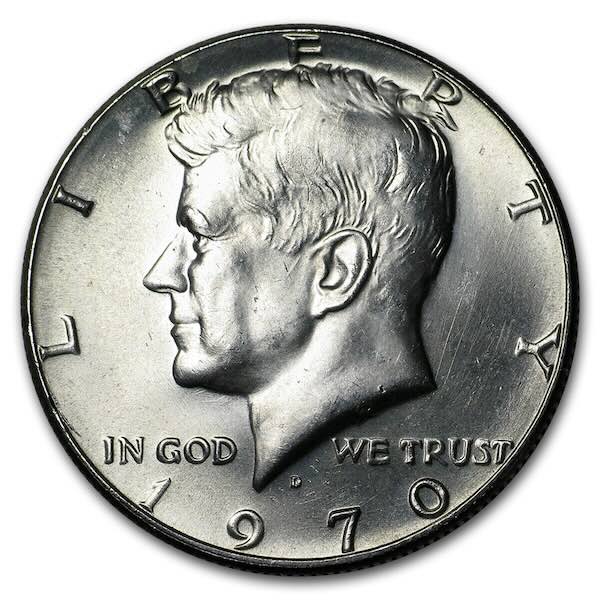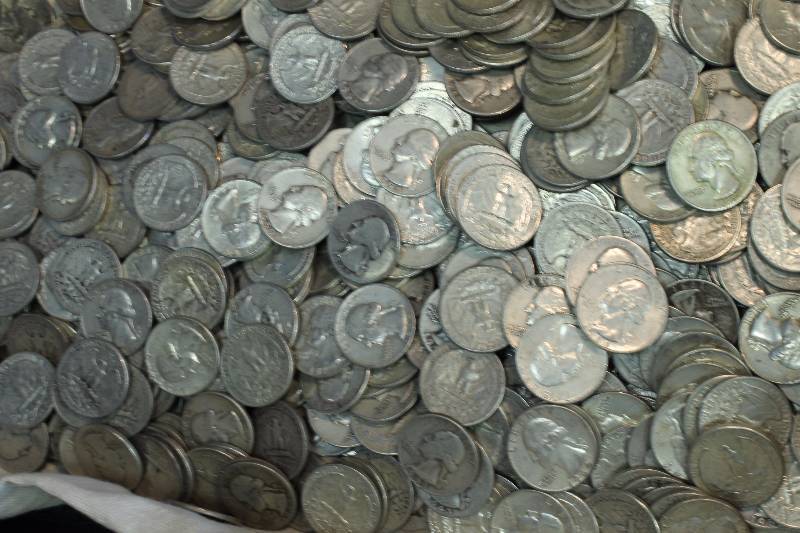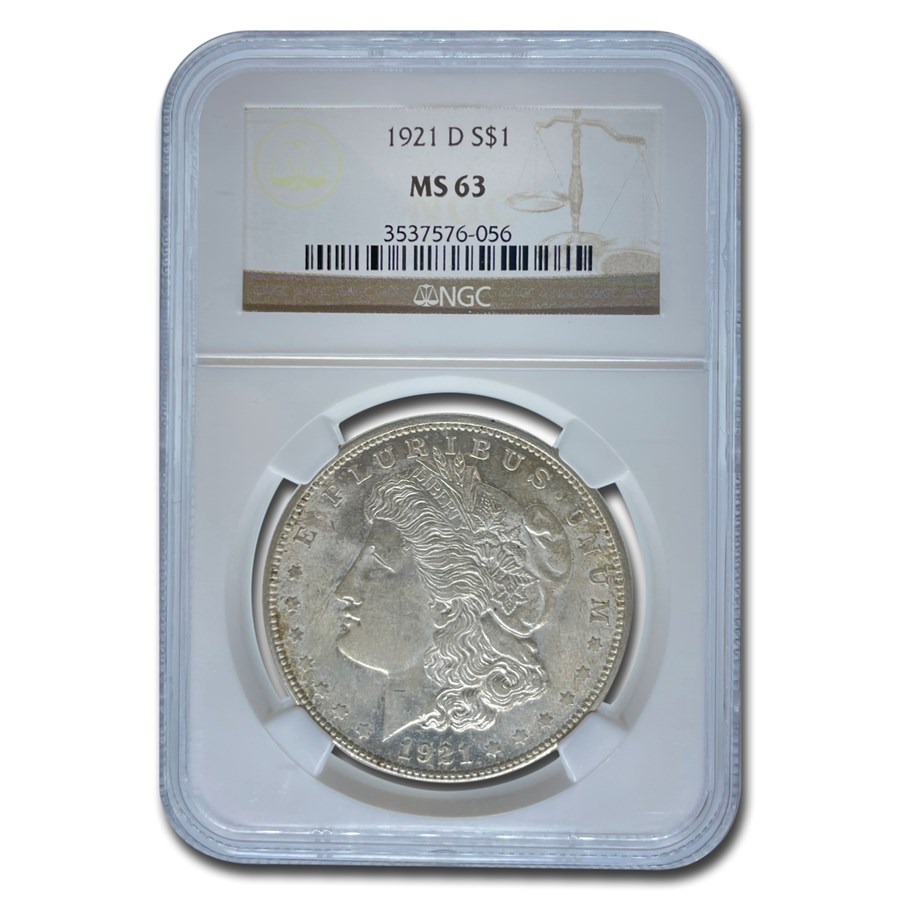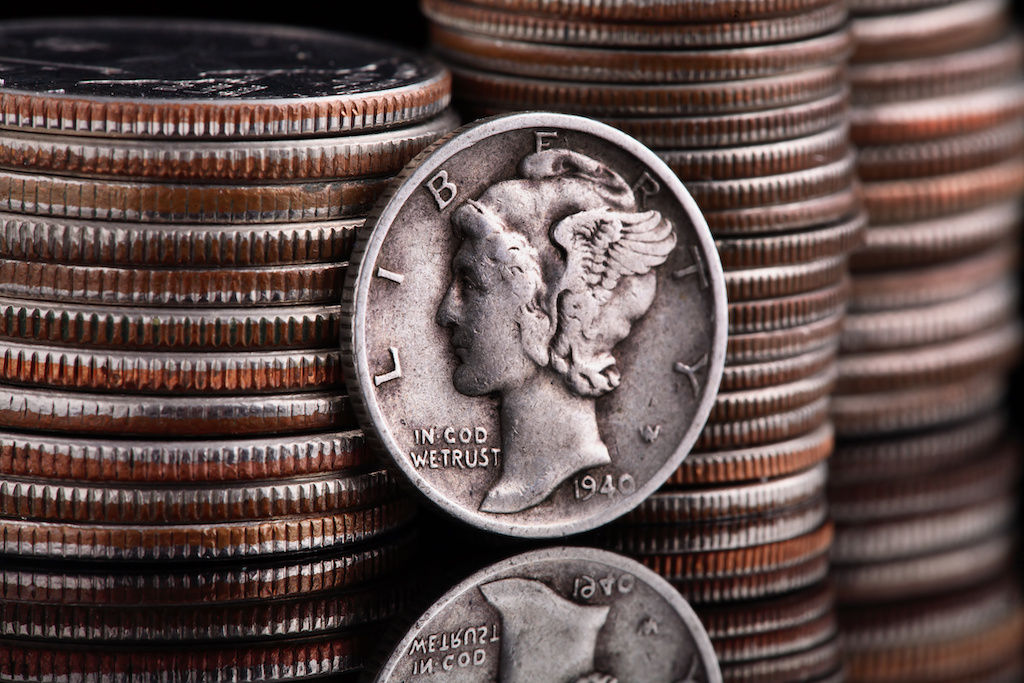Silver Certificates: What They Are, Value Today & How to Identify Collectible Issues
Summary
- Silver certificates were U.S. paper currency (1878–1964) once redeemable for silver; redemption for silver ended in 1968.
- They’re still legal tender at face value, but collectors pay more for most notes.
- Common $1 blue-seal notes (Series 1935 & 1957) often sell for a few dollars in circulated condition; uncirculated, star notes, fancy serials, and earlier “large-size” notes bring more.
- Condition, series/date, signatures, star notes, and eye appeal drive value—not silver content.
What is a Silver Certificate?
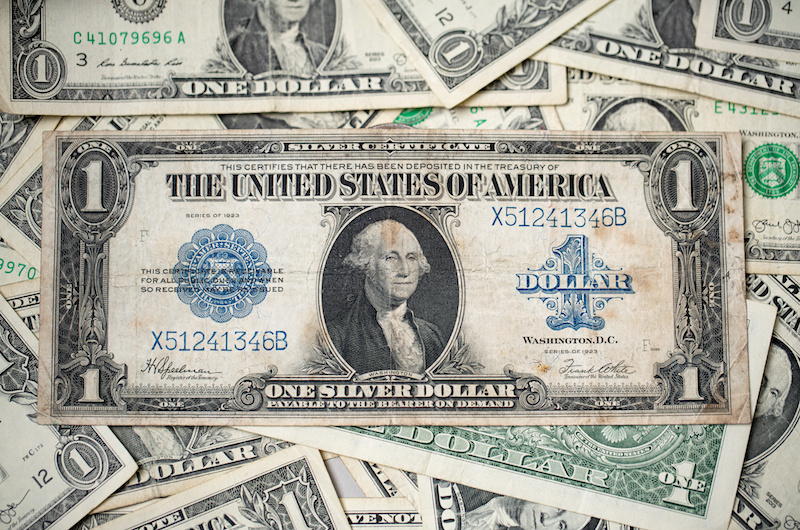
A silver certificate is a type of U.S. paper money issued from 1878 to 1964. The promise printed on the face—“payable to the bearer on demand”—originally meant you could exchange the note at the Treasury for silver dollars, later silver bullion.
- Redemption for silver coins effectively ended in 1964 (as silver coins left circulation).
- Redemption for silver bullion ended June 24, 1968.
- Today, silver certificates are legal tender for face value, but collector demand determines market value.
Key identifier: most small-size silver certificates carry a blue Treasury seal and blue serial numbers, which is why many collectors casually call them “blue seal dollars.”
Why Silver Certificates Matter to Collectors
Even though you can’t redeem them for metal, silver certificates are a historic bridge between America’s metal-backed currency era and today’s fiat money. For collectors and stackers, they’re tangible artifacts of the silver standard that offer affordable entry points into paper currency collecting. From common $1 notes, to serious rarity of large-size types silver certificates are highly tradable and widely recognized across the U.S. paper-money market.
Most Common Types & Designs
Small-size (1928–1964), focus on $1 notes
- Series 1935 (many sub-series) and Series 1957 (A, B, etc.).
- Blue seal, Washington portrait, and the obligation text referencing silver.
- Common in circulated condition; premiums increase for Choice/ Gem Unc, Star notes (★), and fancy serials (e.g., radars, repeaters, low serials).
Large-size (1878–1923), the iconic classics
- 1896 “Educational” series ($1, $2, $5): considered among the most beautiful U.S. notes.
- 1899 $1 “Black Eagle” (Eagle above Lincoln & Grant): tremendous collector following.
- Earlier large-size types (various 1886/1891 designs) exist in multiple denominations up to $1,000.
Tip: large-size notes are physically bigger (approx. 7.375″×3.125″) than small-size (approx. 6.14″×2.61″) and typically command higher values, especially in collectible grades.
Are Silver Certificates Worth Anything? Typical Value Ranges
Values vary with series, variety, condition, and market demand. These typical retail ranges (subject to change) help frame expectations:
| Type / Series | Heavily Circulated | Nice Circulated (VF–XF) | Uncirculated (Choice/Gem) | Notes |
|---|---|---|---|---|
| $1 Silver Certificate, 1935 (blue seal) | $2–$6 | $8–$20 | $30–$80+ | Star notes often bring more; rare sub-series or mules command premiums. |
| $1 Silver Certificate, 1957 (blue seal) | $2–$6 | $8–$20 | $30–$80+ | Crisp packs and high-grade certified notes sell higher. |
| $1 “Black Eagle” 1899 (large size) | $90–$250 | $250–$600 | $800–$2,000+ | Eye appeal and problem-free paper matter a lot. |
| 1896 “Educational” $1/$2/$5 (large size) | $250–$1,000+ | $1,000–$5,000+ | $5,000–$20,000+ | Among the most coveted designs in U.S. currency. |
Ranges are illustrative, not offers; verify against current auction comps and dealer price lists. Third-party certification (PMG/PCGS Currency) supports liquidity and value transparency.
How to Tell if You Have a Silver Certificate
- Read the obligation: Look for phrasing referencing silver payable to the bearer.
- Spot the seal color: Most small-size silver certificates show a blue seal and blue serials.
- Check the series/date: $1 Series 1935 & 1957 are the most common. Earlier large-size dates (e.g., 1899, 1896) are silver certificates too.
- Confirm denomination: Historically issued from $1 to $1,000, but the $1 small-size note is most encountered today.
What Makes One Silver Certificate More Valuable Than Another?
- Condition/Grade: Crisp paper, sharp corners, and original embossing increase value.
- Series & Signatures: Some combinations are scarcer (e.g., certain 1935 sub-series).
- Star Notes (★): Replacement notes often carry premiums.
- Fancy Serials: Low numbers, radars, repeaters, ladders, solids—collectors pay up.
- Eye Appeal: Clean paper, bright inks, and no problems (stains, writing, tears).
- Certification: PMG or PCGS Currency encapsulation helps confirm authenticity and grade.
Can You Still Redeem a Silver Certificate for Silver?
No. The Treasury ended silver redemption June 24, 1968. Notes remain legal tender for face value, but collectors pay more than face for most issues.
How & Where to Sell (or Buy) Silver Certificates
- Reputable currency dealers & coin shops: Fast transactions and informed pricing.
- Major auctions: Useful for rare types or high-grade notes (review recent comps first).
- Online marketplaces: Broaden reach, but understand fees and vet buyers/sellers.
- Grading first? For better material (large-size types, Choice Unc, star notes, fancy serials), third-party grading can be worthwhile to maximize liquidity.
Practical tip: Keep notes in currency sleeves; avoid folds or paper clips. Photograph in neutral light for accurate representation when selling.
Silver Certificates vs. “Silver Coins” or “Junk Silver”
- Silver certificates have no melt value; they’re paper notes prized for collectability.
- Junk silver (pre-1965 dimes/quarters/halves at 90% silver) trades by melt value plus a premium and is part of the bullion market.
- It’s common for collectors to pursue both: notes for numismatic history, coins for bullion content.
FAQs
Are silver certificates worth more than face value?
Usually yes—especially for uncirculated, star notes, fancy serials, or large-size types. Common circulated $1 blue-seal notes might sell for just a few dollars.
What is a 1957 silver certificate worth?
Many 1957 (and 1957A/1957B) $1 notes sell for $2–$6 in circulated condition; uncirculated examples often bring $30–$80+. Star notes and high grades can command higher prices.
What about a 1935 silver certificate?
Similar ranges to 1957. Scarce sub-varieties (e.g., certain 1935 mules), stars, and high grades have stronger premiums.
Is a 1923 $1 silver certificate valuable?
The 1923 large-size $1 (various types, including the “spearhead” and “pictorial” designs) often brings $90–$250 in lower grades and much more in higher grades.
Can I take a silver certificate to the bank?
You can deposit it at face value (not recommended). Banks do not pay a collector premium. Sell to a currency dealer, auction house, or knowledgeable collector to realize market value.
Is grading necessary?
Not required for common circulated notes, but grading by PMG/PCGS often helps for uncirculated, star/fancy serial, or large-size notes to maximize confidence and resale value.
Research & Price-Checking Best Practices
- Compare recent realized prices from major auctions and established dealers.
- Learn series/sub-series differences and signature combinations (some are scarce).
- When in doubt, consult a professional currency dealer or submit for third-party grading.
Market prices change and can be volatile. Nothing here is financial advice. Evaluate your goals and consider consulting a qualified professional before buying or selling.
Final Considerations
Without being backed by gold or silver, the Federal Reserve Notes and the no longer-issued silver certificates are fiat currency since neither is redeemable for a set amount of silver or gold.
The value of individual silver certificates as collectibles can vary widely based on their age, condition, rarity, and specific print run, among other factors. Some are particularly valuable, especially specimens in good condition or with certain serial numbers, with many examples of PCGS or PMG-graded large denomination silver certificates fetching hundreds of dollars.
Silver certificates continue to appeal strongly to silver stackers, notaphilists, currency collectors, and those who appreciate the history and nostalgia they represent. They are a historical artifact that reminds us of an era when silver was integrally woven into the fabric of the economy and how changes occurred regularly in the currency system.

